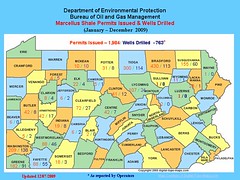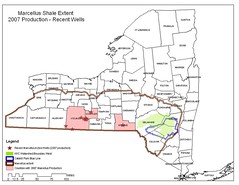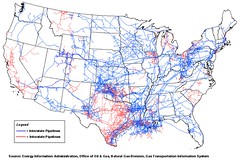The 35-year-old federal law regulating tap water is so out of date that the water Americans drink can pose what scientists say are serious health risks — and still be legal.
Only 91 contaminants are regulated by the Safe Drinking Water Act, yet more than 60,000 chemicals are used within the United States, according to Environmental Protection Agency estimates. Government and independent scientists have scrutinized thousands of those chemicals in recent decades, and identified hundreds associated with a risk of cancer and other diseases at small concentrations in drinking water, according to an analysis of government records by The New York Times.
But not one chemical has been added to the list of those regulated by the Safe Drinking Water Act since 2000.
Other recent studies have found that even some chemicals regulated by that law pose risks at much smaller concentrations than previously known. However, many of the act’s standards for those chemicals have not been updated since the 1980s, and some remain essentially unchanged since the law was passed in 1974.
All told, more than 62 million Americans have been exposed since 2004 to drinking water that did not meet at least one commonly used government health guideline intended to help protect people from cancer or serious disease, according to an analysis by The Times of more than 19 million drinking-water test results from the District of Columbia and the 45 states that made data available.
In some cases, people have been exposed for years to water that did not meet those guidelines.
But because such guidelines were never incorporated into the Safe Drinking Water Act, the vast majority of that water never violated the law.
...
Drinking water that does not meet a federal health guideline will not necessarily make someone ill. Many contaminants are hazardous only if consumed for years. And some researchers argue that even toxic chemicals, when consumed at extremely low doses over long periods, pose few risks. Others argue that the cost of removing minute concentrations of chemicals from drinking water does not equal the benefits.
Moreover, many of the thousands of chemicals that have not been analyzed may be harmless. And researchers caution that such science is complicated, often based on extrapolations from animal studies, and sometimes hard to apply nationwide, particularly given that more than 57,400 water systems in this country each deliver, essentially, a different glass of water every day.
Government scientists now generally agree, however, that many chemicals commonly found in drinking water pose serious risks at low concentrations.
And independent studies in such journals as Reviews of Environmental Contamination and Toxicology; Environmental Health Perspectives; American Journal of Public Health; and Archives of Environmental and Occupational Health, as well as reports published by the National Academy of Sciences, suggest that millions of Americans become sick each year from drinking contaminated water, with maladies from upset stomachs to cancer and birth defects.
Those studies have tracked hospital admissions and disease patterns after chemicals were detected in water supplies. They found that various contaminants were often associated with increased incidents of disease. That research — like all large-scale studies of human illnesses — sometimes cannot definitively say that chemicals in drinking water were the sole cause of disease.
But even the E.P.A., which has ultimate responsibility for the Safe Drinking Water Act, has concluded that millions of Americans have been exposed to drinking water that fails to meet a federal health benchmark, according to records analyzed by The Times. (Studies and E.P.A. summaries can be found in the Resources section of nytimes.com/water.)
“If it doesn’t violate the law, I don’t really pay much attention to it,” said Stephen Sorrell, executive director of Emerald Coast Utilities Authority, which serves Pensacola, Fla. Data show that his system has delivered water containing multiple chemicals at concentrations that research indicates are associated with health risks. The system has not violated the Safe Drinking Water Act during the last half-decade.
...
The Times examined concentrations of 335 chemicals that government agencies have determined were associated with serious health risks. The analysis counted only instances in which the same chemical was detected at least 10 times for a single water system since 2004, at a concentration that the government has said poses at least a 1-in-10,000 risk of causing disease.
That is roughly equivalent to the cancer risk posed by undergoing 100 X-rays. (More information on data sources is at nytimes.com/water-data.)
...
In a statement, the E.P.A. said that a top priority of Lisa P. Jackson, who took over the agency in January, was improving how regulators assessed and managed chemical hazards.
“Since chemicals are ubiquitous in our economy, our environment, our water resources and our bodies, we need better authority so we can assure the public that any unacceptable risks have been eliminated,” the E.P.A. wrote. “But, under existing law, we cannot give that assurance.”
Ms. Jackson has asked Congress to amend laws governing how the E.P.A. assesses chemicals, and has issued policies to insulate the agency’s scientific reviews from outside pressures.
...
“For years, people said that America has the cleanest drinking water in the world,” said William K. Reilly, the E.P.A. administrator under President George H. W. Bush. “That was true 20 years ago. But people don’t realize how many new chemicals have emerged and how much more pollution has occurred. If they did, we would see very different attitudes.”...
Because some of the diseases associated with drinking water contamination take so long to emerge, people who become ill from their water might never realize the source, say public health experts.
“These chemicals accumulate in body tissue. They affect developmental and hormonal systems in ways we don’t understand, ” said Linda S. Birnbaum, who as director of the National Institute of Environmental Health Sciences is the government’s top official for evaluating environmental health effects.
“There’s growing evidence that numerous chemicals are more dangerous than previously thought, but the E.P.A. still gives them a clean bill of health.”
...
Polluters Push Back
Earlier this decade, scientists at the E.P.A. began telling top agency officials that more needed to be done. Dr. Peter W. Preuss, who in 2004 became head of the E.P.A.’s division analyzing environmental risks, was particularly concerned.
So his department started assessing a variety of contaminants often found in drinking water, including perchlorate, an unregulated rocket fuel additive, as well as two regulated compounds, trichloroethylene, a degreaser used in manufacturing, and perchloroethylene or perc, a dry-cleaning solvent. Research indicated that those chemicals posed risks at smaller concentrations than previously known. Links to that research can be found in the Resources section of nytimes.com/water.
But when E.P.A. scientists produced assessments indicating those chemicals were more toxic — the first step in setting a standard for perchlorate and tougher standards for the other two substances — businesses fought back by lobbying lawmakers and regulators and making public attacks.
Military contractors, for example, said that regulations on perchlorate, which has been associated with stunted central nervous system development, would cost them billions of dollars in cleanup costs. In 2003, an Air Force colonel, Daniel Rogers, called an E.P.A. assessment of the chemical “biased, unrealistic and scientifically imbalanced.” Military officials told E.P.A. scientists they were unpatriotic for suggesting that bases were contaminated, according to people who participated in those discussions.
Property owners who had rented space to dry cleaners lobbied lawmakers and top E.P.A. officials to remove government scientists from research on perc, which has been associated with some kinds of tumors, according to interviews with lobbyists. (Trichloroethylene has been associated with liver and kidney damage and cancer.)
Soon, Dr. Preuss was told by some superiors that he might be dismissed if he continued pushing for extensive assessments of certain chemicals, he said.
“It’s hard for me to describe the level of anger and animosity directed at us for trying to publish sound, scientific research that met the highest standards,” Dr. Preuss said. “It went way beyond what would be considered professional behavior.”
...
“We need action,” said Senator Barbara Boxer, a California Democrat and chairwoman of the Environment and Public Works Committee, which oversees the Safe Drinking Water Act. “E.P.A. has the authority to set new standards, but it wasn’t used over the last eight years. There are people at risk.”
...
In May, Ms. Jackson, the E.P.A. head, announced reforms to protect agency scientists like Dr. Preuss from outside pressures. Dr. Preuss said he was an enthusiastic supporter of Ms. Jackson’s efforts, and believed the arsenic assessment would be published without interference.
“But there are still tens of thousands of chemicals we haven’t assessed,” he added. “If you don’t know what’s dangerous, you can’t write laws against it.”
Risky — and Legal
Water system managers say their water is safe. “If it wasn’t, the E.P.A. or the state would tell us to change,” said Gustavo Villa, general manager of Maywood Mutual Water Company No. 2. Before taking his job in 2006, Mr. Villa drove 18-wheeler trucks, and had no experience running a water system. He said the system was trying to install machinery to remove some manganese, but halted construction because of missing permits.
Lawmakers on Capitol Hill and in state legislatures have pursued options that could help Maywood and other cities. The California Legislature, for instance, this year passed a bill focused on Maywood that would revoke permits from the town’s water systems if they cannot “deliver safe, wholesome and potable drinking water.”
...
And the E.P.A. recently said it would analyze a host of chemicals — known as endocrine disruptors — that some scientists have associated with cancer and other diseases. Congress called for such tests in 1996, but the agency failed to meet deadlines for 13 years.
In the meantime, regulators struggle to explain to residents that even legal drinking water can pose risks. Some of them have recommended that people use home water filters.
Most people don’t comprehend the complicated scientific papers that describe cancer risks, Dr. Parekh said. “And if the law is working, they don’t have to,” he added. “But in this new world, where pollution is so much more common, they may have to learn to understand it.”
To read the complete, more extensive article, citing specific situations and locations, CLICK HERE.Editorial comments by Splashdown in red.



















No comments:
Post a Comment